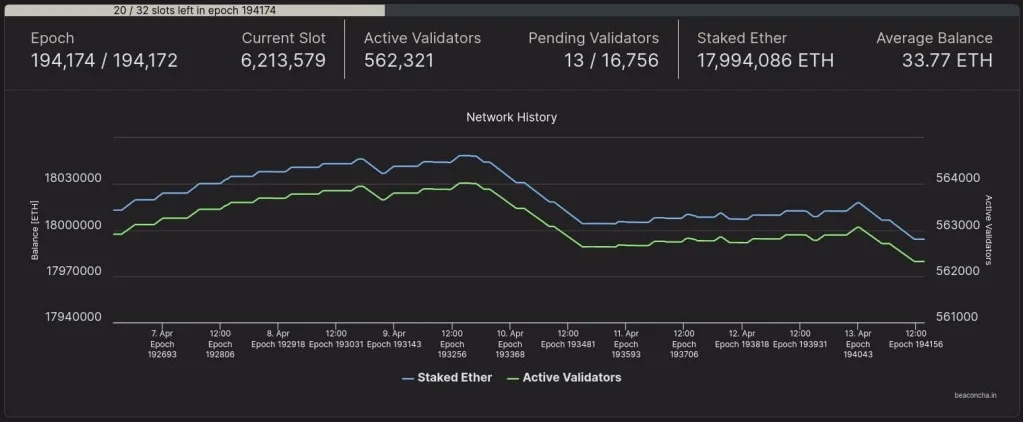Shapella arrived, and several doubts flooded users about what will happen to Ethereum staking and network stability.
In short
- Shapella is the merger of Shanghai and Capella updates.
- The system limits stake withdrawals based on network capacity.
What to Know About Shapella and Ethereum Withdrawals? Shapella, the next major Ethereum update, has arrived. Its activation allows stakers to withdraw ether (ETH) from staking, locked since the launch of the Ethereum 2.0 network more than two years ago. Developers named this update Shapella, which is the merger of Shanghai and Capella. The reason for this merger is that Ethereum’s operation, after the Merge, will split into two layers:
- Execution layer: this operates the Ethereum blockchain, called Beacon Chain, where the system stores the network’s accounting. Some nodes hold a copy of the network in it.
- Consensus layer: this is where the staking validator nodes operate. Here is where each node validates and confirms transactions.
Shanghai update applies to the execution layer, while developers will apply Capella, the consensus layer. Each node within each layer must upgrade its software to the latest version. Ethereum’s various clients, both in the consensus and execution layers, already have the newest version of Shapella.
As for Shanghai, it is the name developers gave to several EIPs (Ethereum improvement proposals). They activated them simultaneously this April 12. We will see some updates that relate to withdrawals:
- EIP-3651: It will allow users to withdraw block rewards in staking to a specific address indicated by the user.
- EIP-4895: will enable the possibility of staking withdrawals in the Beacon Chain.
- They’ll also enable EIP-3855, EIP-3860, and EIP-6049.
At the consensus layer, the Capella update will allow nodes to withdraw funds, both partially and in total, and the ability to set an Ethereum address for those withdrawals.
How the withdrawal system will work
The ability to withdraw ETH staking is the big player in this update. Since the activation of the Beacon Chain in December 2020, there have been over 18 million ETH in staking, with over 562,000 registered nodes. Becoming a validator requires depositing a particular Ethereum Smart Contract for 32 ETH, which would remain locked in (deposited funds and earnings) until Shanghai activation.

With activation ready, users will have two withdrawal options: partial and complete.
- Partial withdrawal: users can withdraw the surplus above 32 accumulated ETH. With this, the validator node remains operational.
- Complete (full) withdrawal: users withdraw the surplus plus 32 ETH from the node. This option shuts down the validator node.
Once Shapella activates, all validator nodes will have the ability to withdraw their funds. However, there are limitations for each withdrawal. The network will only allow partial withdrawals of 16 validators per block or every 12 seconds. Complete withdrawals are more complex. The number of full withdrawals that can be processed will depend on the number of active validators in the network. Full withdrawals will be confirmed within each epoch, comprised of 32 blocks, which occur on average every 6.5 minutes.
With more than 560,000 active validators, the network can process seven full withdrawals per epoch, totaling 1,800 complete withdrawals daily, meaning more than 57,000 ETH withdrawals daily. Should the number of active nodes per day be reduced below 327,680, the network will only process four complete withdrawals daily.
The withdrawal queue will work as a FIFO (first in, first out). So the system processes withdrawal requests according to the queue. This mechanism, which limits the number of withdrawals, prevents a considerable node run, preventing several validators from being deactivated simultaneously and causing the network to collapse.
What comes after Shapella
Shapella, especially Shanghai, is part of a stage in Ethereum known as “Surge.” Originally they planned to activate a technique called sharding within this stage. Binance CEO Changpeng Zhao (CZ) thinks this stage is much more critical than the Merge.
However, due to the community’s demands and in the face of possible delays that the Surge could suffer, Ethereum developers preferred to prioritize the issue of withdrawals. Sharding is a critical stage, allowing the network to increase scalability. The Beacon chain divides into 32 sub-networks or “shards,” each with its validators. Sharding allows the network to increase its capacity and simultaneously avoid congestion.
There are no dates for the arrival of Surge to Ethereum or the following improvements. Ethereum’s development and evolution suffered various delays in the past.